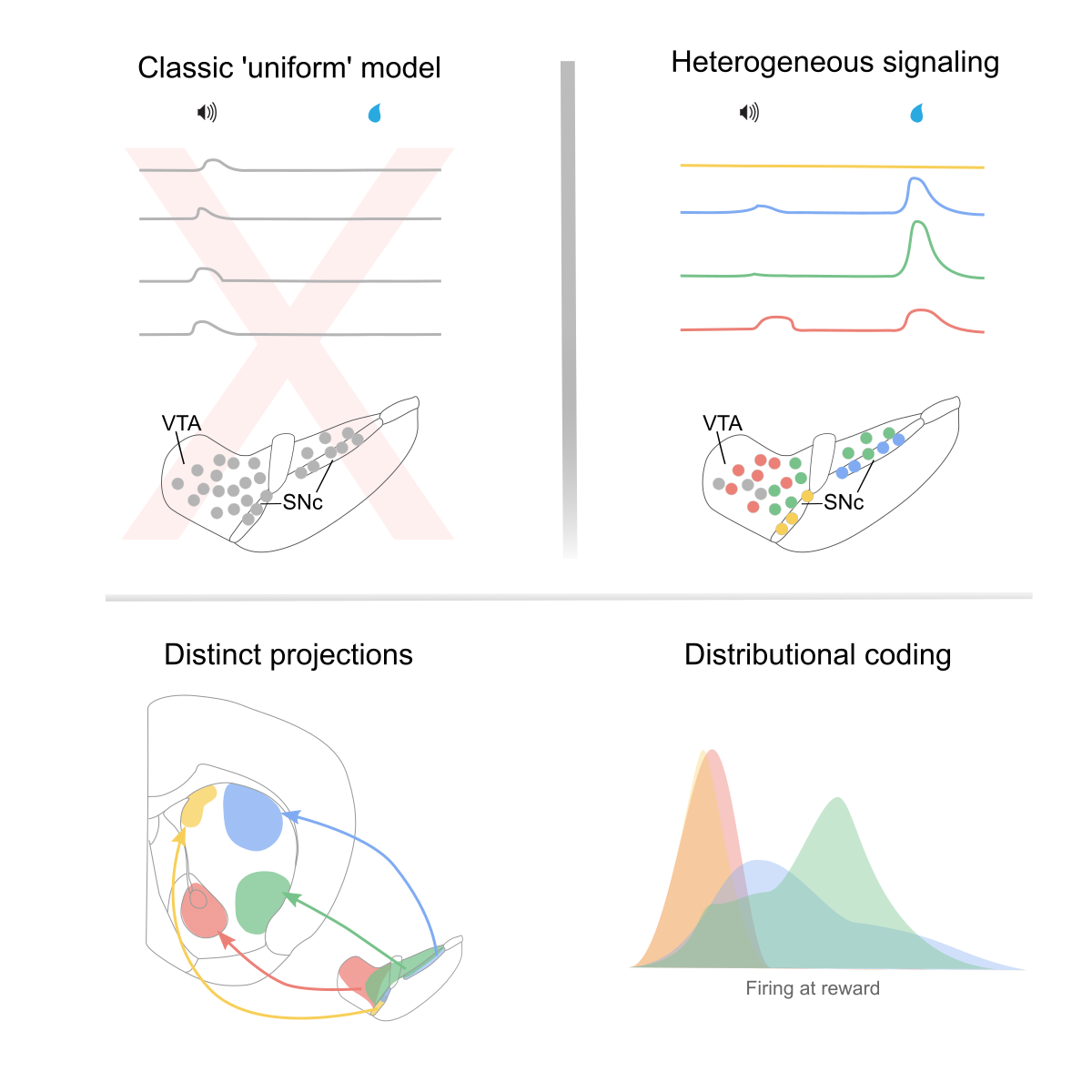Distributional coding of associative learning in discrete populations of midbrain dopamine neurons.
Dopamine-producing nerve cells are important for purposeful behaviour. But not all dopamine cells are the same. We recorded the activity of dopamine cells as mice learned to associate a sound with a reward. Different sets of dopamine cells represented sounds, movements, and rewards in varied ways, and sent their signals to different parts of the brain. This diversity helps explain why dopamine cells can play many roles in learning.
Midbrain dopamine neurons are thought to play key roles in learning by conveying the difference between expected and actual outcomes. Recent evidence suggests diversity in dopamine signaling, yet it remains poorly understood how heterogeneous signals might be organized to facilitate the role of downstream circuits mediating distinct aspects of behavior. Here, we investigated the organizational logic of dopaminergic signaling by recording and labeling individual midbrain dopamine neurons during associative behavior. Our findings show that reward information and behavioral parameters are not only heterogeneously encoded but also differentially distributed across populations of dopamine neurons. Retrograde tracing and fiber photometry suggest that populations of dopamine neurons projecting to different striatal regions convey distinct signals. These data, supported by computational modeling, indicate that such distributional coding can maximize dynamic range and tailor dopamine signals to facilitate specialized roles of different striatal regions.

2024. Cell Rep, 43(4):114080.